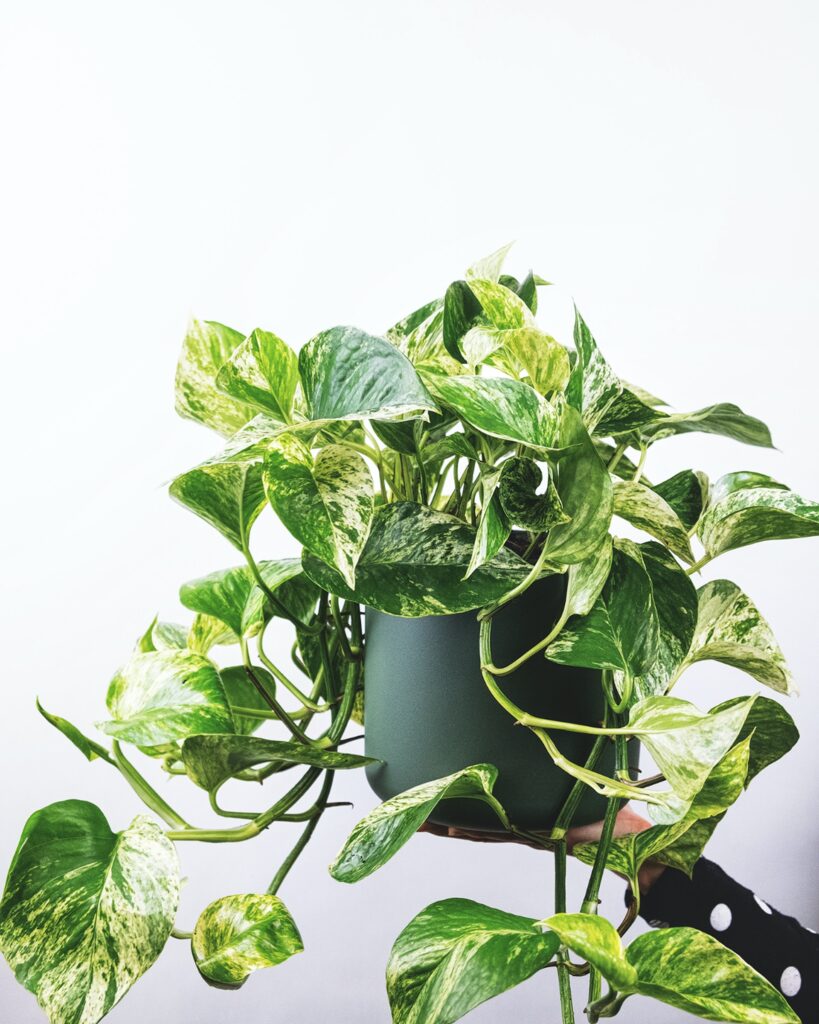
Explore the best practices for a healthy Pothos at home. Unlock the secrets of effective Pothos care with our expert guide.
Discover comprehensive insights on ‘How to Care for Pothos.’ Our guide outlines essential steps, from optimal lighting to watering techniques. Learn how simple yet effective care practices can transform your Pothos into a vibrant and resilient indoor companion. Explore our expert tips today for a thriving Pothos experience.
Pothos (Epipremnum aureum) is a tropical vine that originates from the Solomon Islands in the South Pacific. It’s often recognized for its trailing growth off shelves and desks. Frequently cultivated as a houseplant, Pothos is known for its pointed, heart-shaped green leaves, which occasionally display variegations in white, yellow, or pale green hues.
Pothos plants generally live between five to ten years. However, with the right care, these sturdy indoor plants can endure for an extended period. Ensuring your plant is in a suitable environment and carrying out regular maintenance can greatly enhance its lifespan.
Pothos Care

Table of Contents
| Common Name | Pothos, Golden Pothos, Devil’s Vine, Devil’s Ivy |
| Botanical Name | Epipremnum aureum |
| Family | Araceae |
| Plant Type | Vine |
| Mature Size | 20–40 ft. long, 3–6 ft. wide |
| Sun Exposure | Full sun, partial shade |
| Soil Type | Moist but well-drained |
| Soil pH | Neutral to slightly acidic |
| Bloom Time | Rarely flowers |
| Flower Color | Gold/Yellow, Purple/Lavender |
| Native Areas | Asia |
| Toxicity | Toxic to dogs and cats |

Soil
Pothos plants flourish in regular, well-draining potting soil that can be somewhat dry or even rocky. They prosper in a soil pH that ranges from 6.1 to 6.8. Pothos are tolerant of various conditions, from neutral to mildly acidic. This adaptability makes them a resilient choice for many gardeners.

Water
Allow the soil of your pothos plant to fully dry out between each watering. Continual exposure to damp soil can cause the plant’s roots to rot. The appearance of black spots on the leaves or a sudden wilting of the plant signifies that the soil has been overly saturated.
The plant itself will show signs when it requires water. A drooping posture indicates the need for hydration. However, avoid waiting until the leaves begin to shrivel, as this could lead to leaf loss. If the edges of the leaves turn dry and brown, it suggests the plant has been left dry for an extended period.

Light
Pothos plants are adaptable to both sun and shade, but it’s important to monitor their exposure to prevent extremes. When cultivated indoors, they favor bright, yet indirect sunlight. Variegated varieties may lose their distinctive leaf pattern and revert to a solid green color if they’re not receiving sufficient light. However, relocating them to a brighter location typically reinstates the variegation. If the leaves suddenly appear pale, it’s an indication that the plant is exposed to excessive direct sunlight.

Fertilizer
Pothos plants do not require frequent feeding, but they can gain from sporadic fertilization during their growth period. It’s advisable to nourish pothos plants with a well-balanced houseplant fertilizer once a month throughout the spring and summer seasons. Refrain from fertilizing during the winter, as this is when the plant enters a dormant state.

Temperature and Humidity
Pothos plants should be maintained in an environment where the temperature consistently stays above 50 degrees. They thrive best in temperatures ranging from 65 to 75 degrees. While Pothos plants flourish in high humidity, they are also remarkably tolerant of conditions with low humidity. If desired, you can enhance the humidity surrounding the plant by situating it in a naturally humid area of your home, like a bathroom, or by clustering it with other tropical houseplants to establish a more humid microclimate.

Lifespan
Pothos plants typically have a lifespan of five to ten years. However, with appropriate care, these robust indoor plants can survive much longer. Providing your plant with suitable environmental conditions and performing basic upkeep can significantly extend its longevity.
